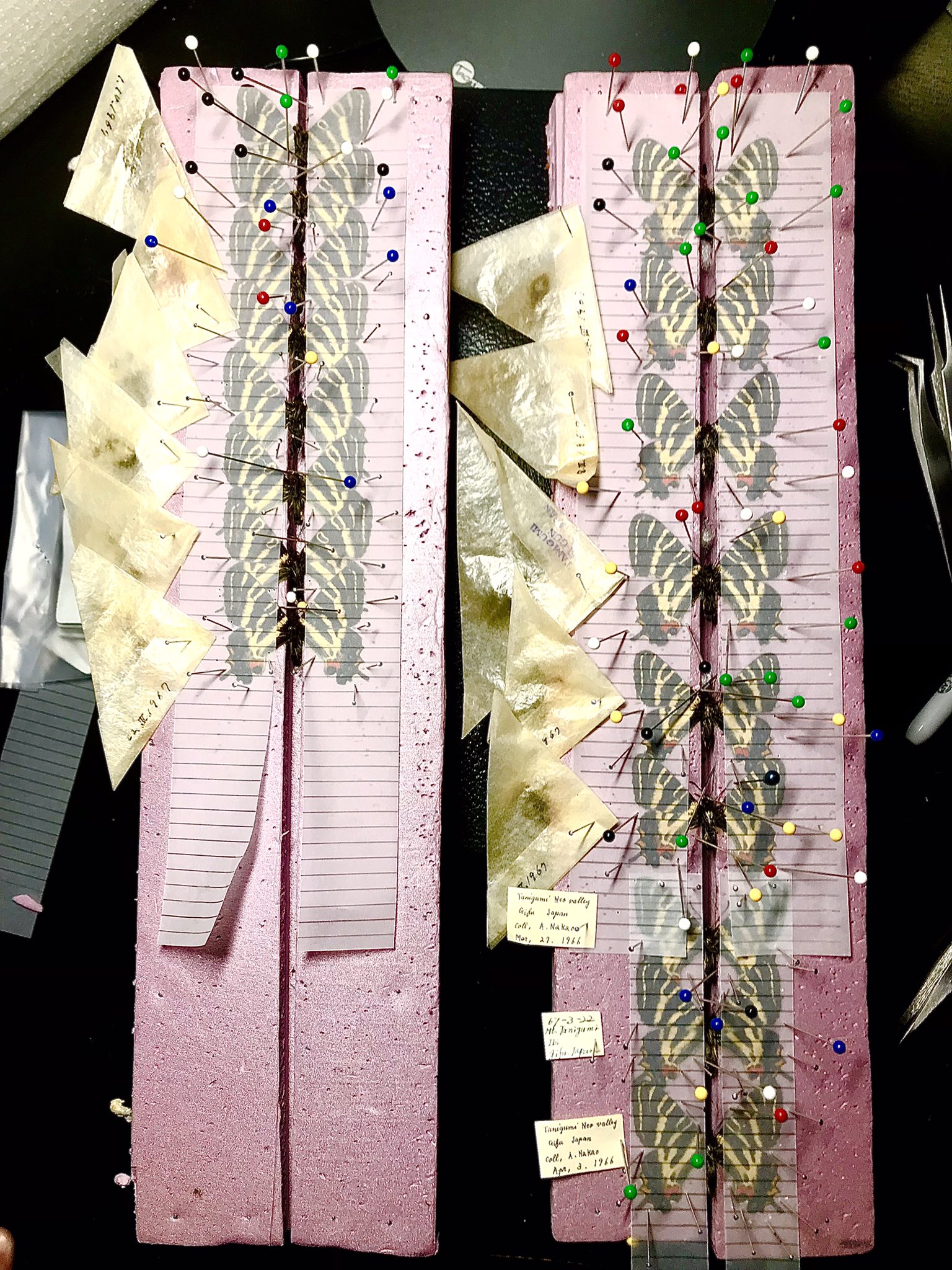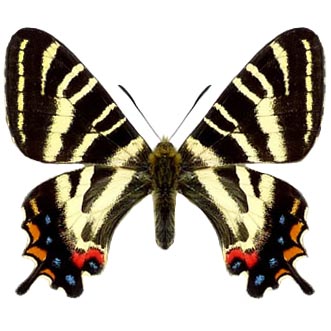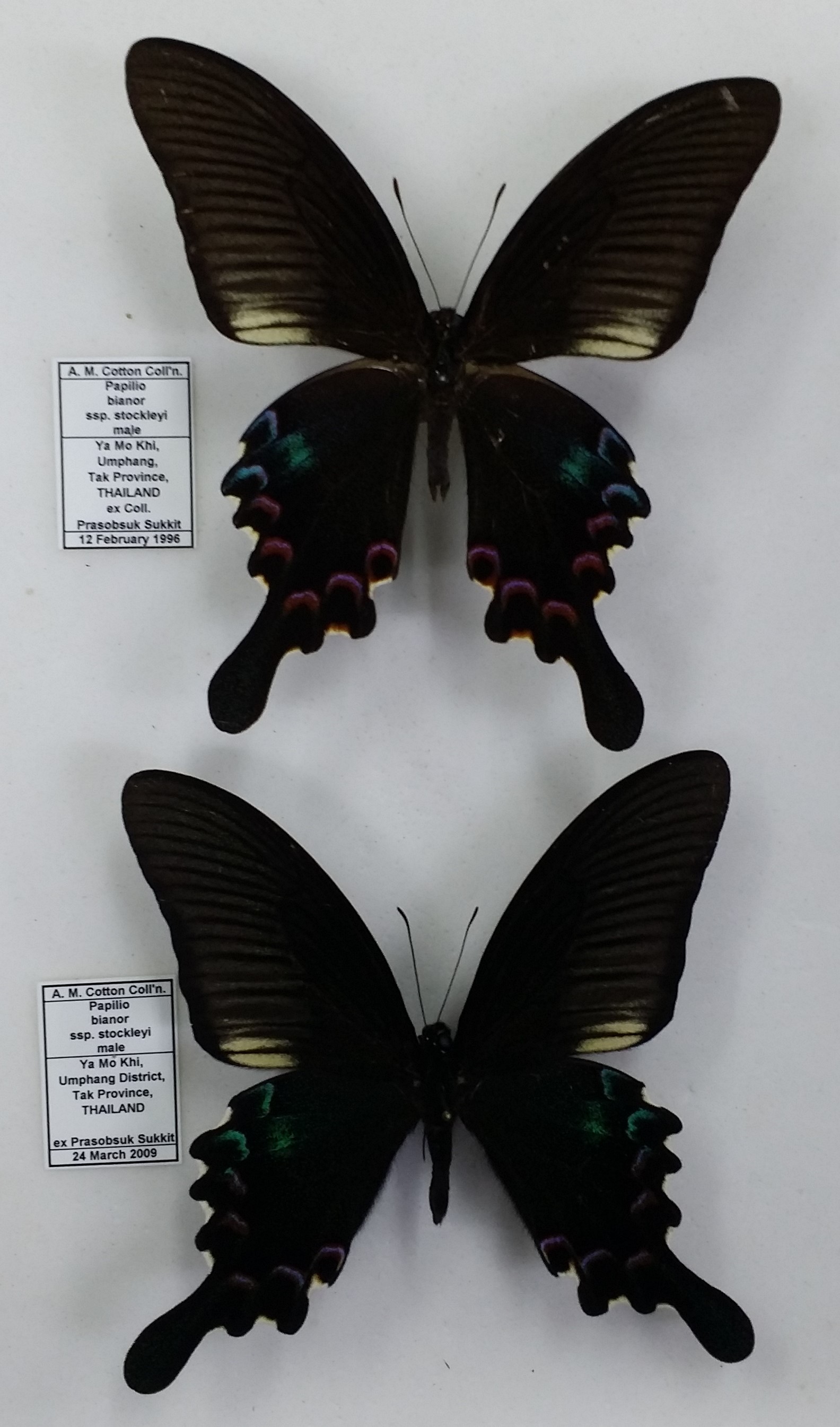Page 1 of 2
Unlocking the Hidden Art of Shingling
Posted: Fri Jun 02, 2023 4:03 am
by EdTomologist
Do any other collectors use the shingling technique when spreading butterflies? I've seen others use this method before, and I find that it allows me to fit twice as many specimens on a board. While shingling works best for larger specimens, I'd like to highlight its application with a few specimens of Luehdorfia japonica.

Re: Unlocking the Hidden Art of Shingling
Posted: Fri Jun 02, 2023 8:19 am
by adamcotton
Yes, I do this too, although I leave a slightly larger gap between specimens. On a 60cm board I can normally fit about 10-12 large Papilios or 15+ smaller specimens like these.
Interestingly I pin the data on the right of each specimen rather than the left - personal preference I suppose.
Adam.
Re: Unlocking the Hidden Art of Shingling
Posted: Fri Jun 02, 2023 8:19 am
by wollastoni
Impressive !
But I would be afraid to damage some scales or to have vein marks.
One aesthetic advice : put the HW a little bit lower like this one from
Bicbugs

- Luehdorfia-japonica.jpg (23.25 KiB) Viewed 1728 times
Re: Unlocking the Hidden Art of Shingling
Posted: Fri Jun 02, 2023 8:25 am
by adamcotton
I haven't seen any problems with scale rub using this method, which I have been using for years. You just have to be careful when spreading the forewings of the next specimen that the utensils don't touch the hindwings of the specimen above.
Adam.
Re: Unlocking the Hidden Art of Shingling
Posted: Fri Jun 02, 2023 7:21 pm
by 58chevy
Wallastoni, I prefer the hindwings closer to the forewings, the way Entomologist does it. Lowering the hindwings makes the specimen look "droopy" to me. Each collector has his own preference. As far as I know, there's no "correct" way to mount the specimens. I would be interested in seeing a poll of Insectnet members to see what percentage prefer "up" or "down".
Re: Unlocking the Hidden Art of Shingling
Posted: Fri Jun 02, 2023 8:22 pm
by EdTomologist
As mentioned by 58chevy, I have a specific style for spreading butterfly wings. Typically, I aim to align the forewing and hindwing margins to create a nearly rectangular shape. However, it's important to note that this technique may not work for all species due to their unique wing shapes. I appreciate your suggestion of positioning the Luehdorfia specimens, Wallastoni, and I will consider trying that approach with the additional specimens I have. Thank you for your input!
Re: Unlocking the Hidden Art of Shingling
Posted: Fri Jun 02, 2023 8:25 pm
by EdTomologist
adamcotton wrote: ↑Fri Jun 02, 2023 8:19 am
Yes, I do this too, although I leave a slightly larger gap between specimens. On a 60cm board I can normally fit about 10-12 large Papilios or 15+ smaller specimens like these.
Interestingly I pin the data on the right of each specimen rather than the left - personal preference I suppose.
Adam.
I can imagine with some of the long tailed papilionidae overlapping wings is almost a must.
Re: Unlocking the Hidden Art of Shingling
Posted: Fri Jun 02, 2023 10:16 pm
by adamcotton
wollastoni wrote: ↑Fri Jun 02, 2023 8:19 am
One aesthetic advice : put the HW a little bit lower like this one from Bicbugs
This is not bad, but I don't like the appearance of specimens set with hindwings pointing downwards, sometimes called 'Japanese style'.
Here are 2 spring form
Papilio bianor stockleyi, the top one spread by Prasobsuk Sukkit and the lower one spread by me from a papered specimen he gave me:

- stockleyi spreading comparison.jpg (544.5 KiB) Viewed 1677 times
Adam.
Re: Unlocking the Hidden Art of Shingling
Posted: Fri Jun 02, 2023 10:54 pm
by EdTomologist
I follow the same setting style as you Adam. I too dislike the “Japanese style.”
Re: Unlocking the Hidden Art of Shingling
Posted: Fri Jun 02, 2023 10:58 pm
by eurytides
Same here.
Re: Unlocking the Hidden Art of Shingling
Posted: Sat Jun 03, 2023 12:27 am
by boghaunter1
Me too!.... I absolutely cringe when I see beautiful/rare spp. with "drooping" hindwings (huge unsightly gap/V between fore & hindwings)... I call it "crucifixion" style when specimens are mounted in an over stretched/sprawled out "X" shape. Over the years I've read in many books that there should be a small "V" between the wings making a smooth transition from fore to hindwings. I also cringe when I see Sphinx moths mounted with the forewings angled up greater than a 90 degree right angle to the body. There are, however, some spp. (some Swallowtails, Parnassians & many of the Birdwings) that look better with a larger gap between the wings. In the end it is, of course, a personal choice... each to their own... I will relax "crucifixion" mounted leps. & remount them whenever possible. I think a lot of these "big gap" specimens may be due to incomplete relaxing... as the hindwings in many leps. (especially old papered specimens) can remain very stiff despite plenty of time in the relaxing chamber. I have often used a sharp X-acto knife to cut the seized wing muscles to allow them to be pulled up more... also very helpful/often essential to mount up some skipper butterflies.
John K.

Re: Unlocking the Hidden Art of Shingling
Posted: Sat Jun 03, 2023 7:55 am
by Cabintom
Bear in mind that there are genera (Neptis for example) which can have diagnostic characters along the ventral FW inner margin or dorsal HW costa. If HWs are set to high up, those features are obstructed rendering specific ID difficult.
Re: Unlocking the Hidden Art of Shingling
Posted: Sat Jun 03, 2023 8:34 am
by adamcotton
Indeed, some groups need to be spread that way.
Adam.
Re: Unlocking the Hidden Art of Shingling
Posted: Sat Jun 03, 2023 9:45 am
by bobw
Having studied Colias for many years I've always left a big gap between forewing and hindwing, as the males of some species have a sex brand along the dorsal hindwing costa, which is diagnostic. Not as much as Adam's Japanese set stockleyi, which looks a bit weird, but I find it equally unappealing when the forewing covers a large part of the hindwing.
Re: Unlocking the Hidden Art of Shingling
Posted: Sat Jun 03, 2023 2:53 pm
by AKColias
entomologist, would you consider making a video of your pinning methods? I am sure both the shingling and the pinning multiple specimens under a single paper would be of interest to many people. Personally, I do shingle sometimes, but I always use a separate strip of paper for each wing...clearly your method would be faster.
Re: Unlocking the Hidden Art of Shingling
Posted: Sat Jun 03, 2023 2:57 pm
by AKColias
wollastoni wrote: ↑Fri Jun 02, 2023 8:19 am
Impressive !
But I would be afraid to damage some scales or to have vein marks.
One aesthetic advice : put the HW a little bit lower like this one from
Bicbugs
Luehdorfia-japonica.jpg
I prefer pulling the hindwing up more, aesthetically. But for species with tails, I make sure the tails do not stick out to the sides past the width of the forewing, as that increases the chance of damage; and for a few species that area needs to be visible to show a feature.
Re: Unlocking the Hidden Art of Shingling
Posted: Sat Jun 03, 2023 7:39 pm
by EdTomologist
AKcolias, here is your video.
Re: Unlocking the Hidden Art of Shingling
Posted: Sun Jun 04, 2023 3:33 pm
by Paul K
I don’t see a need for shingling unless you are Vernon Brou.
Re: Unlocking the Hidden Art of Shingling
Posted: Sun Jun 04, 2023 3:56 pm
by Trehopr1
I have to agree with you there Paul !
If you have to do things like this then you should just make or get yourself some new (extra) boards. I have at least 20 boards at my disposal and even at the height of summer I've never used more than 10 (at the most); with adequate spacing between the specimens.
I can see someone "commercially" spreading a bunch of the same species like this for the sake of stuffing them in riker mounts for sales (which we see a lot of these days on the internet). However, for individual needs I think even if you were to breed your own stuff you'd only need six or eight or 10 of something for yourself while all the rest would get papered and then sold or traded.
Re: Unlocking the Hidden Art of Shingling
Posted: Sun Jun 04, 2023 4:12 pm
by Trehopr1
In Adam's comparison photograph of spreading styles I definitely prefer the (spread) of the lower specimen.
As John K. so aptly put it the upper specimen has an "X" shape about it. Thus, it looks unnatural in such a position and could even be construed as being overspread if it weren't for the fact that the forewings are perpendicular to the body.
There are a few select species that I could see this working for but, that is because of their wing shape.
I have seen many beautifully prepared O. victoria (males) in the past offered by Russian sellers spread in the "X" style and it truly works VERY well for the species -- I think.

